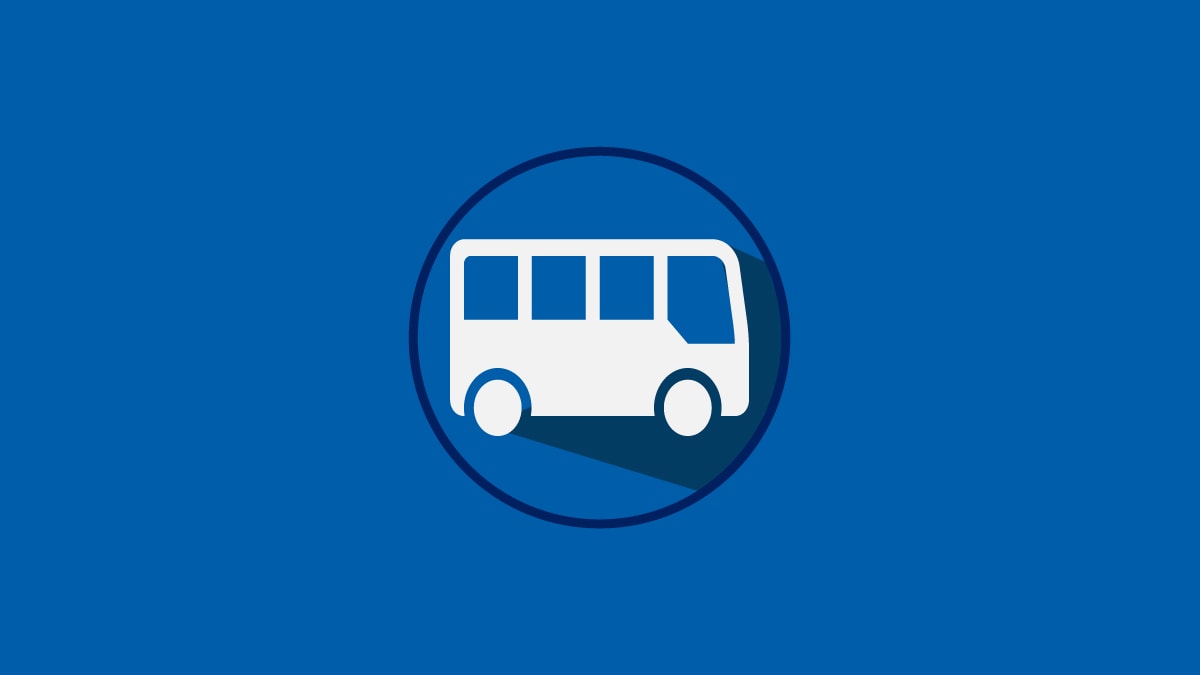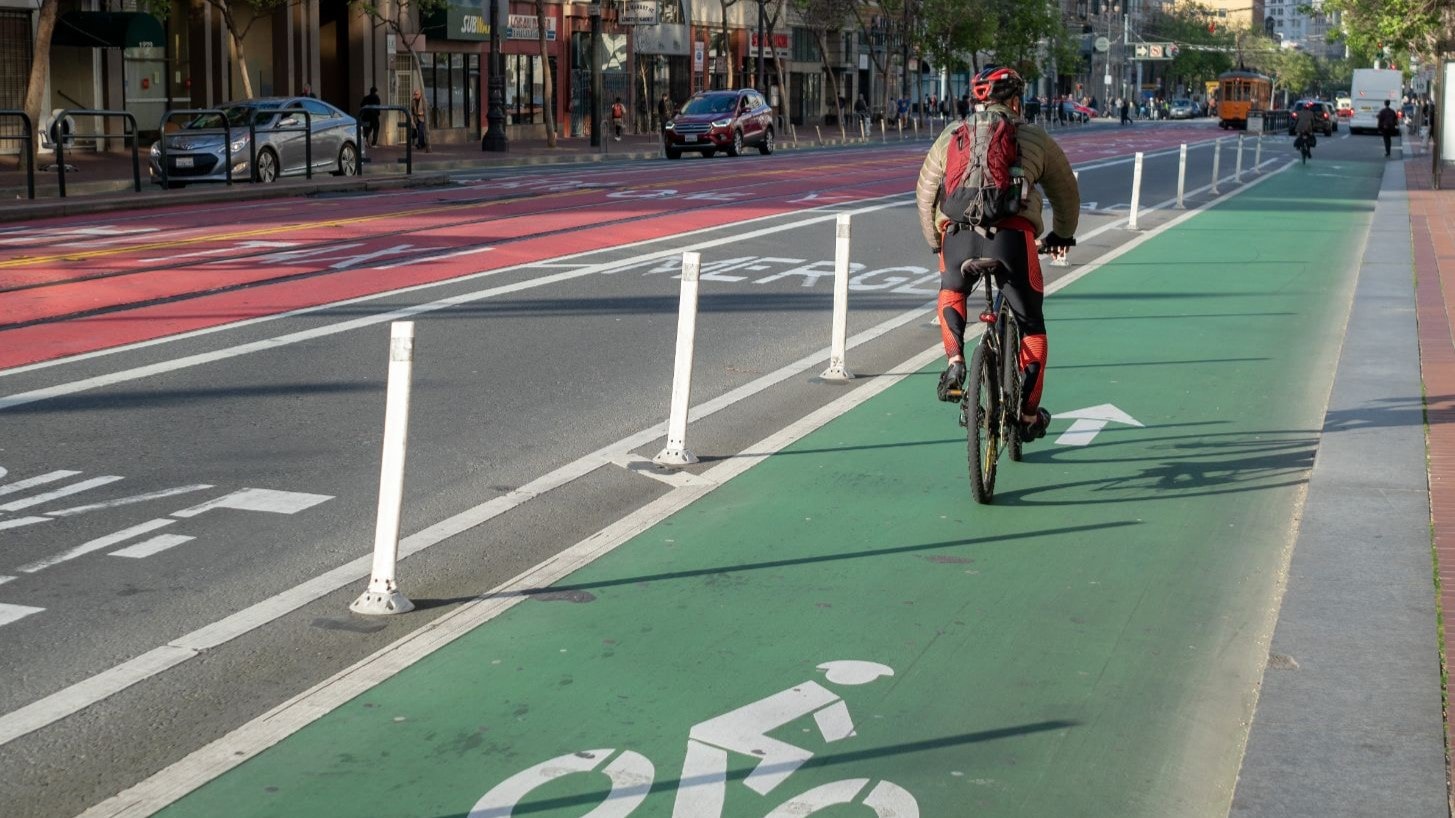What to know
As a transportation professional, you can promote active living by helping to improve pedestrian, bicycling, and transit spaces in your community. You can work with partners to plan and design streets, sidewalks, paths, and transportation facilities that are safer and more accessible for people of all ages and abilities.

Overview
Most Americans use streets, sidewalks, or transit networks to move around for daily needs. However, many people do not use active transportation options such as walking, bicycling, or taking transit because they may be unsafe, unavailable, or unreliable.
Transportation professionals, including engineers, planners, public policy analysts, and researchers, can help address these concerns. They can design, build, and maintain safe and convenient places where people can walk, cycle, wheelchair roll, and use public transit.
Better infrastructure means people have more ways to get regular physical activity. For example, people who use public transit can walk or bike to and from bus stops or transit stations. More physical activity means better health and quality of life for residents, as well as economic and environmental benefits for communities.
What you can do
You can use the following strategies to encourage physical activity in your community:
Infrastructure
You can design, build, and maintain transportation infrastructure (roads, sidewalks, public transportation stops, bike lanes, etc.) that responds to community needs and makes it safe, easy, and appealing to use active transportation to get to everyday destinations.
Make it easy for people to:
- Use active transportation by providing:
- Crosswalks and traffic-calming elements such as curb extensions, median islands, and mini-circles.
- Street amenities such as benches, water fountains, public toilets, and lighting.
- Landscaping that creates appealing green spaces. For example, plant trees in public right-of ways.
- Crosswalks and traffic-calming elements such as curb extensions, median islands, and mini-circles.
- Walk or wheelchair roll by providing trails and wide sidewalks that are buffered from traffic.
- Bike by providing buffered and protected bicycle lanes, separated bike paths, and networks of low-speed, low-volume bicycle-safe streets (sometimes called "bike boulevards").
Build public transit systems that are safer, efficient, accessible, and easy to use. Support transit-oriented development that is equitable, community-driven, and supported by policies that preserve affordability and do not displace long-term residents.
Use short-term demonstration projects to give residents a chance to try out new pedestrian and bike facilities and traffic-calming elements. These projects can use low-cost materials such as paint, signs, and planters. Collect data to guide permanent construction.
Make streets safer by considering the social, economic, aesthetic, and safety needs of residents and collecting their input. This approach contrasts with the traditional practice of prioritizing automobiles.
Add low-cost pedestrian, bicycle, and transit improvements to routine construction and maintenance projects when possible. These projects can include painting, repair, and resurfacing of roadways and utility work.
Offer incentives to private companies to include pedestrian, bicycle, and transit upgrades in their development, construction, and improvement projects.
Keep existing streets, sidewalks, bicycle facilities, and trails free from hazards, such as holes, uneven surfaces, parked cars, overgrown vegetation, snow, and ice.
Promote equity
Promote safe, convenient, and equitable access to active transportation for people of all ages, races, backgrounds, income levels, and abilities.
Use health equity impact assessments that bring together people of all backgrounds to evaluate transportation systems, policies, practices, and programs to ensure that they serve all people.
Adopt:
- Policies, such as Complete Streets, that require the routine design and operation of streets that are safe for all users.
- Design guidelines and standards that reflect best practices in equitable pedestrian, bicycle, and transit-oriented design. See Resources section for guidance documents.
Include factors related to equity, transit options, and active transportation in the selection criteria for transportation projects. For the population being served, these factors may include:
- Age
- Income
- Race
- Disabilities
- Health status
- Rate of car ownership
- Percentage of people who walk, bike, or use public transit
Use performance measures that prioritize equity in access, safety, and efficiency when assessing roadway and transportation systems. See Resources.
Make sure programs designed to improve or expand transportation options have the support of the community and include specific ways to measure success.

What other communities are doing
These transportation professionals are using effective strategies to increase physical activity and transportation efficiency and to make equity a key part of their decision-making process.
Bicycle Planning in Pennsylvania
Officials in Montgomery County outlined their vision for improving the county's bicycle infrastructure in a plan called Bike Montco. The plan describes key goals and objectives for a more complete, equitable bicycle network that uses existing state, county, and local streets and trails. Officials also integrated it into the county's comprehensive plan to help guide future land use and overall growth and development.
Reimagining a Bus System in Texas
The Metropolitan Transit Authority of Harris County recognized the need to update the bus system that serves Houston and Harris County. No major changes had been made in 3 decades. Extensive public outreach gave residents input into a comprehensive plan to remake the system and led to broad support. The updated system provides greater access to frequent transit service, connecting one million people to workplaces and other destinations.
Pop-up Demonstration Projects in Illinois
The Chicago-based Active Transportation Alliance made temporary pedestrian and bicycle safety improvements around greater Chicago to demonstrate how they could work. These pop-up projects used low-cost, high-visibility designs and materials to create or enhance crosswalks, curb extensions, median islands, and mini-circles.
Gateway 1 Corridor Action Plan in Maine (video)
Representatives from 20 towns in Maine came together to preserve the scenic and rural character along Route 1. This coastal highway goes through each town and is important to each economy. The partners developed a plan to reduce traffic congestion, provide public transportation options, reduce rural habitat loss, link residents to workplaces, and increase local jobs.
Active Transportation Projects in Tennessee
The Nashville Area Metropolitan Planning Organization revised its scoring and selection process to focus on active transportation projects designed to improve the health of residents. Officials added elements related to health, safety, and social equity, helping them prioritize residents and parts of the city that had been overlooked.
Resources
Overarching
National Physical Activity Plan: Transportation, Land Use, and Community Design
Provides policy and programmatic recommendations to increase physical activity. It includes strategies and tactics for communities, organizations, and individuals in the transportation, land use, and community design sectors.
Pop-Up Placemaking Tool Kit
Provides an introduction to demonstration projects. It includes planning steps; recommended materials; beginner, intermediate, and advanced design "recipes;" and approaches to bike lanes and parklets.
Vision Zero: A Health Equity Road Map for Getting to Zero in Every Community
Recommends ways for communities to advance health equity through Vision Zero, a movement among cities nationally and internationally to eliminate all traffic-related deaths and severe injuries.
Bicycling
Incorporating On-Road Bicycle Networks into Resurfacing Projects
Workbook for roadway agencies includes cost considerations and case studies of successful projects.
Separated Bike Lane Planning and Design Guide
A tool from U.S. Department of Transportation (DOT) that outlines planning considerations for separated bike lanes (also called cycle tracks or protected bike lanes) and provides a menu of design options.
Rural and small towns
Creating Walkable & Bikeable Communities
Helps community leaders and elected officials in rural, suburban, and smaller urban cities learn about options for bicycling and pedestrian facilities. It provides tools, techniques, and samples to help strengthen the link between land use planning, street design, and active transportation.
Small Town and Rural Multimodal Networks Guide
A tool from the DOT that explains how to apply national design guidelines in rural settings. It includes case studies and focuses on how rural communities can make gradual improvements and contribute to innovation.
Urban
Urban Streets, Bikeway, and Transit Street Design Guides
Offers methods cities can use to create Complete Streets that are safe and enjoyable for pedestrians, bicyclists, and transit users. The guides are based on the practical experience of the world's most multi-modal cities. Each method includes required, recommended, and optional elements and practical examples.
Evaluation
Guidebook for Developing Pedestrian and Bicycle Performance Measures (USDOT)
Helps users fully integrate pedestrian and bicycle planning in ongoing performance management activities that support community goals related to equity, health, and safety.
